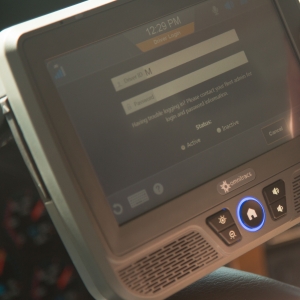
First passed by the United States Congress in 2012 — and officially coming into effect in late 2017 — the Electronic Logging Device (ELD) Mandate was a significant step in preparing the trucking industry for the digital era. Under this directive, fleets were required to replace their Automatic Onboard Recording Devices (AOBRDs) with the more advanced ELDs, so there would be more transparency and accountability fleet management.
On the surface, the two technologies might seem quite similar; for example, both record data such as engine hours, vehicle miles, and drive times, location, etc. But in fact, ELDs build upon the foundation that was laid by AOBRDs when they were first introduced in the late 1980s in several essential ways. ELDs are much more detailed in the information they’re able to record and how they relay that information to both fleet managers and drivers. They’re so effective that Canada followed suit, setting their own ELD Mandate to come into effect by 2020.
We recently connected with Mike Ahart, Vice President of Regulatory Affairs at Omnitracs, to get a better understanding of what the transition from AOBRDs to ELDs means for fleets and drivers alike. Here’s what we learned:
- Expect minimal disruption. Under the new compliance guidelines, all fleets must be outfitted with ELDs by December 16, 2019, as some AOBRDs were grandfathered in the past the initial 2017 deadline. But getting these fleets compliant will only require a software upgrade – reducing the number of transition needs for fleets come December. That extends to drivers who have been operating under the same compliance needs – it’s just the technology itself that’s changing.
- A few adjustments for drivers. Since the first enforcement date, drivers using grandfathered AOBRDs have been transitioning to an ELD compliant version of the software. In that transition, there have been a few key adjustments drivers have had to make including trips automatically starting once the cab hits five miles per hour, managing non-authenticated operations of the vehicle and the limits associated with editing automatically recorded driving. It requires a small learning curve, but it’s crucial to ensure fleet managers are getting all of the information.
- The push for ELDs is happening now. With the final deadline around the corner, one might expect to see a significant push for ELD implementation in the final stretch. But, given the seamless process of getting ELD compliant, it isn’t technology investment that’s driving the last holdouts. Instead, it’s the process of change management and getting drivers and fleets knowledgeable about the shift.
Is your fleet getting prepared for the December deadline? Check out how Omnitracs is helping fleets get ready for ELD compliance implementation here: https://www.omnitracs.com/products/elds-and-hours-service
